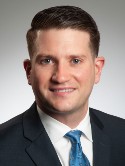| Abstract: |
Background: Recurrence rates after ventral hernia repair vary widely and evidence about risk factors for recurrence are conflicting. There is little evidence for risk factors for long-term recurrence. Methods: Patients who underwent ventral hernia repair at our institution and were captured in the American College of Surgeons-National Surgical Quality Improvement Program database between 2002 and 2015 were included. We reviewed all demographic, procedural, and hernia-specific data. Results: Six hundred and thirty patients were included for analysis with a median follow-up of 4.9 years (inter-quartile range, 2–7.3 years). By univariate analysis, index hernia repairs were more likely to recur if defect size was ≥4 cm (P = .019), no mesh was used (P = .026), or if the repair was for a recurrent hernia (P = .001). Five-year cumulative incidence of recurrence and reoperation was 24.3% and 16.0%, respectively. Patients with a perioperative surgical site occurrence, which included superficial, deep-incisional, and organ space surgical site infections as well as wound disruption, had a 5-year cumulative incidence of recurrence of 54.9% compared with 22.6% for those without surgical site occurrence. By multivariable analysis, non-primary hernia repair (hazard ratio 1.7, 95% confidence interval 1.2–2.4, P = .005) and any postoperative surgical site occurrence (hazard ratio 1.9, 95% confidence interval 1.1–3.6, P = .02) were the only risk factors predictive of recurrence. Patient body mass index had no independent effect on recurrence. Conclusion: 1 in 4 patients undergoing an open ventral hernia repair will have a recurrence after 5 years, and this risk is doubled among patients who experience any perioperative surgical site occurrence. After controlling for patient comorbidities, including body mass index, hernia size, and mesh position, the most significant risk factor for recurrence after ventral hernia repair was a non-primary hernia and surgical site occurrence. © 2020 Elsevier Inc. |




